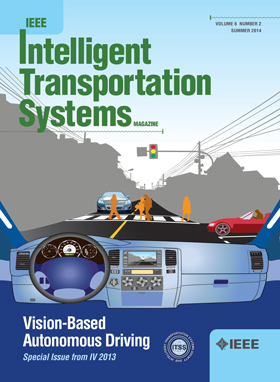Spatiotemporal Generalization Graph Neural Network-Based Prediction Models by Considering Morphological Diversity in Traffic Networks
IF 8.4
1区 工程技术
Q1 ENGINEERING, CIVIL
IEEE Transactions on Intelligent Transportation Systems
Pub Date : 2025-04-16
DOI:10.1109/TITS.2025.3557427
引用次数: 0
Abstract
The morphological diversity, referring to the variations in traffic network topologies defined in this paper, often emerges and brings difficulties in successfully transferring a pre-trained prediction model from one traffic network to another. Moreover, most existing research primarily assumes that traffic data in source and target networks follow independent and identically distributed (i.i.d.) patterns, which is usually not consistent with real-world situations, particularly when considering morphological diversity. For this inconsistency, many efforts have been made, but they mainly concentrate on temporal aspects, which significantly differ from traffic prediction due to spatial and temporal correlations among road segments, influenced by variations in road topology and traffic behavior. This paper introduces a causality-based spatiotemporal out-of-distribution (OOD) generalization method, which is adaptable to most GNNs for diverse, large-scale, dynamic traffic systems with zero-shot. Furthermore, to enhance the generalization and adaptability of the proposed method, we introduce graph matching and equal-sized graph partitioning to alleviate spatial shift between the source and target traffic networks, reduce and align the scale of the networks. Experiments carried out on traffic flow datasets demonstrate that our method significantly improves the performance of various GNN-based traffic predictors in the situation of morphological diversity, achieving a maximum reduction in MAE of 33.08%. Compared to other OOD-driven baselines, our approach also shows a notable improvement, with up to a 40.58% decrease in MAE.考虑交通网络形态多样性的时空概化图神经网络预测模型
形态多样性是指本文定义的交通网络拓扑结构的变化,它经常出现,并且给成功地将预训练的预测模型从一个交通网络转移到另一个交通网络带来困难。此外,大多数现有研究主要假设源网络和目标网络中的流量数据遵循独立和同分布(i.i.d)模式,这通常与现实情况不一致,特别是在考虑形态多样性时。对于这种不一致性,已经做了很多努力,但主要集中在时间方面,由于路段之间的时空相关性,受道路拓扑和交通行为变化的影响,与交通预测存在显著差异。本文介绍了一种基于因果关系的时空分布外(OOD)泛化方法,该方法适用于大多数gnn中具有零射击的多样化、大规模动态交通系统。此外,为了增强该方法的泛化和适应性,我们引入了图匹配和等大小图划分来缓解源和目标交通网络之间的空间偏移,减小和对齐网络的规模。在交通流数据集上进行的实验表明,在形态多样性情况下,我们的方法显著提高了各种基于gnn的交通预测器的性能,MAE最大降低了33.08%。与其他ood驱动的基线相比,我们的方法也显示出显着的改善,MAE降低了40.58%。
本文章由计算机程序翻译,如有差异,请以英文原文为准。
求助全文
约1分钟内获得全文
求助全文
来源期刊

IEEE Transactions on Intelligent Transportation Systems
工程技术-工程:电子与电气
CiteScore
14.80
自引率
12.90%
发文量
1872
审稿时长
7.5 months
期刊介绍:
The theoretical, experimental and operational aspects of electrical and electronics engineering and information technologies as applied to Intelligent Transportation Systems (ITS). Intelligent Transportation Systems are defined as those systems utilizing synergistic technologies and systems engineering concepts to develop and improve transportation systems of all kinds. The scope of this interdisciplinary activity includes the promotion, consolidation and coordination of ITS technical activities among IEEE entities, and providing a focus for cooperative activities, both internally and externally.
 求助内容:
求助内容: 应助结果提醒方式:
应助结果提醒方式:


